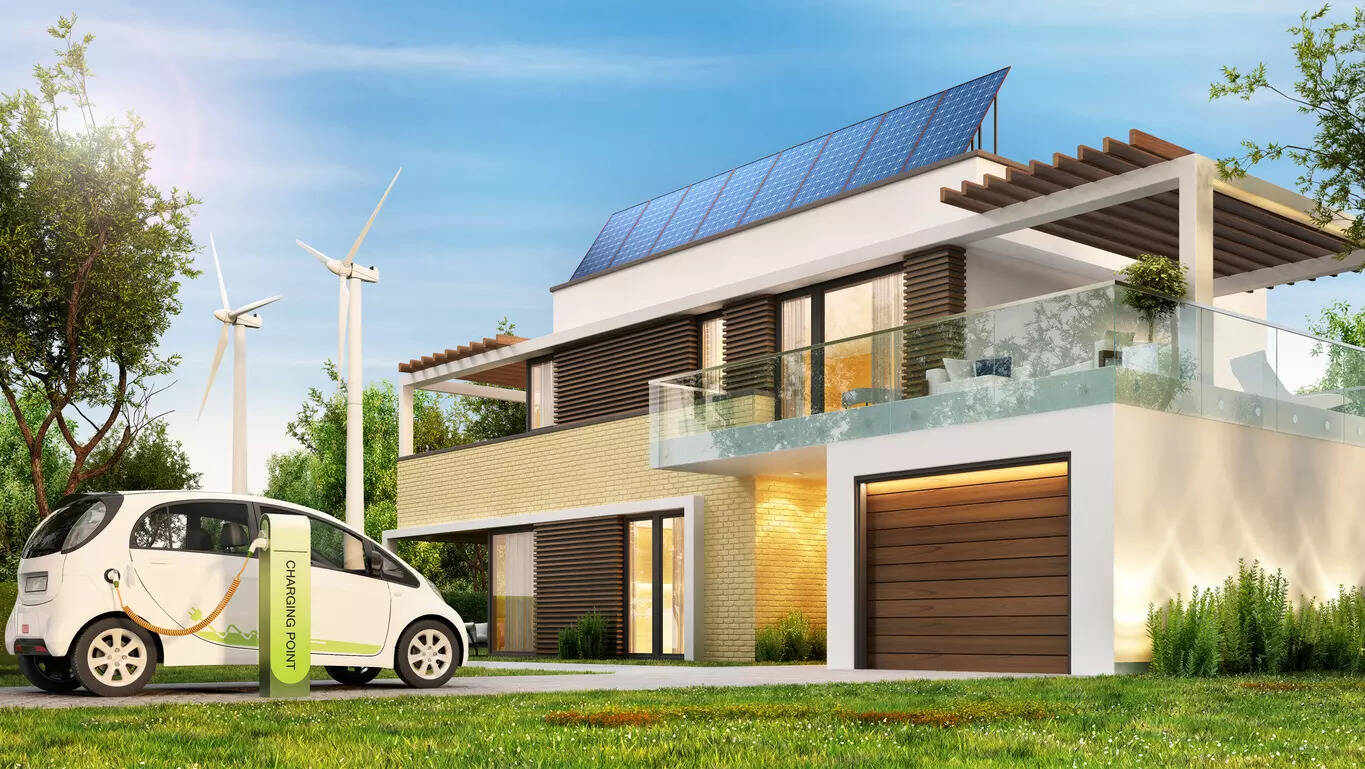
If electric vehicles (EVs) still rely on a coal-heavy grid for charging, are they really cleaner than internal combustion engine vehicles? What’s more, with EV demand surging in Indian cities like Bengaluru, this could increase CO2 emissions from the sector. As a cleaner and scalable charging solution, rooftop photovoltaic (RTPV)-based EV charging stations (EVCS) are a viable option. So, what is holding back the wider uptake of RTPV-EVCS?
The problem
Bengaluru, for instance, is expected to have 23 lakh EVs on its streets by 2030, with a projected energy demand of 3–4 billion units (BU). Continuing to rely on the current energy mix for charging would lead to an additional 1.5–2 million tonnes of CO2 emissions. To switch to RTPV-based charging, around 2.5 GW of solar panels will be required across the city. Although Bengaluru has the rooftop capacity to support this, commercial constraints have hindered the adoption of RTPV-EVCS in the city.
Consider a typical EV charging station with three 3.3 kW chargers and one 7.2 kW charger, costing between INR 80,000 and 1.5 lakh for the initial set-up. With a current average utilisation rate of less than 10per cent (charging for only 2–3 hours/day), the cost of dispensing each unit of electricity (or levelised cost of charging [LCOC]) is about INR 11–12. At these rates, the business case is not lucrative. Moreover, these charging stations will bear an additional cost of INR 12–35 lakh to install RTPV (18–50 kW capacity). This further hikes the LCOC to INR 20–40 per unit, wiping out profits entirely.
Certain subsidies might help reduce the upfront costs. For example, for RTPV in Bengaluru, INR 18,000 per kW under the PM Surya Ghar Muft Bijli Yojana and INR 10,000 from the state government for apartment complexes and group housing societies can help reduce the LCOC by 12.5%–20%. Although this financial boost holds true for most Indian cities, it does not significantly impact profitability or payback periods.
The solution
Here, we suggest four approaches to make RTPV-EVCS a sustainable and profitable business model in Indian cities, fostering growth, reducing operational costs, and contributing to the nation’s green energy goals.
Improving charger utilisation: By increasing the average utilisation to 30per cent (or 4–6 hours/day), the LCOC can be reduced significantly by 60%–63%. This can be done by enhancing the discoverability and accessibility of EVCS through viable business models. Partnerships between EV fleets and EVCS operators could ensure a sustained charger demand. Models that aggregate individual EV demand for EVCS operators can also be explored, securing a steady and predictable demand for EV charging.
Improved tariffs: The government can offer a better tariff structure for surplus solar energy from RTPV-EVCS systems, especially during the initial 5–7 years, to support such businesses. An increase in the tariff by INR 1–2 could significantly reduce the payback period, improving early cash flow when EV adoption and charger utilisation are still low. Further, implementing a dynamic compensation rate based on charger utilisation could allow the government/DISCOM to extend support to a larger number of RTPV-EVCS systems during their low-usage periods, without significantly increasing the overall compensation burden.
Peer-to-peer (P2P) energy trading: Housing both RTPV systems and EVCS in the same building is often not feasible due to ownership and financial limitations. Instead, supporting technological linkages can offer greater flexibility. P2P energy trading and policy frameworks developed by DISCOMs can enable energy crediting across geographically separate locations through new frameworks that allow consumers to link distributed energy assets regardless of location. This can make the RTPV-EVCS model more scalable and practical.
Pilot projects: DISCOMs and state governments can lead the way by launching pilots to validate the technical and financial viability of RTPV-EVCS business models, building investor confidence and accelerating wider adoption. This will also enable DISCOMs to evaluate how RTPV-EVCS models can reduce peak loads, defer costly grid upgrades, improve local energy balancing, and enhance grid resilience.
Without appropriate course correction, commercial challenges will lead to continued dependence on grid-based EV charging reliant on fossil fuels. With rising demand, this practice places significant pressure on the grid, driving the need for costly infrastructure upgrades, expanded generation capacity, and more complex grid management. Pursuing the solutions discussed above could create lucrative business opportunities for private investors, easing the burden on the government and DISCOMs. The urgency of this issue is already apparent. With the right policy environment and enabling frameworks, RTPV-EVCS can be effectively scaled for delivering decentralised and clean energy for urban mobility—fulfilling the vision of EVs powered by rooftop solar as the cornerstone of clean, resilient cities.
(Disclaimer: The authors work in the area of Green Mobility at the Center for Study of Science, Technology and Policy, a research-based think tank.)

